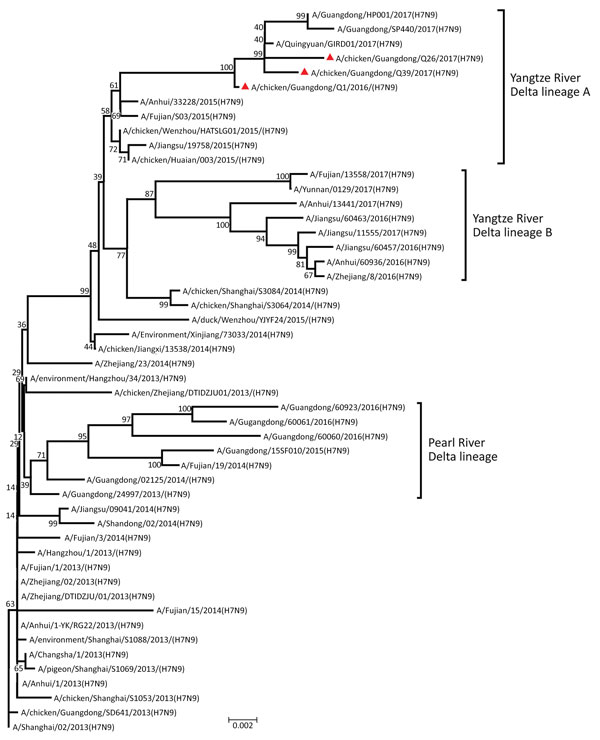Volume 23, Number 12—December 2017
Research Letter
Avian Influenza (H7N9) Viruses Co-circulating among Chickens, Southern China
Figure

Figure. Phylogenetic analysis of the hemagglutinin gene of 3 isolates (triangles) of avian influenza (H7N9) virus obtained from chickens in southern China, 2016–2017, compared with reference isolates. The tree was constructed by using the neighbor-joining method with the maximum composite likelihood model in MEGA version 5.2 (http://www.megasoftware.net) with 1,000 bootstrap replicates, based on the nucleotide sequence 1–1,695. Virus lineages are shown at right. Scale bar indicates nucleotide substitutions per site.
1These authors contributed equally to this article.
Page created: November 16, 2017
Page updated: November 16, 2017
Page reviewed: November 16, 2017
The conclusions, findings, and opinions expressed by authors contributing to this journal do not necessarily reflect the official position of the U.S. Department of Health and Human Services, the Public Health Service, the Centers for Disease Control and Prevention, or the authors' affiliated institutions. Use of trade names is for identification only and does not imply endorsement by any of the groups named above.